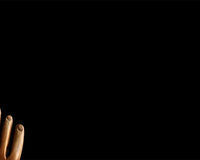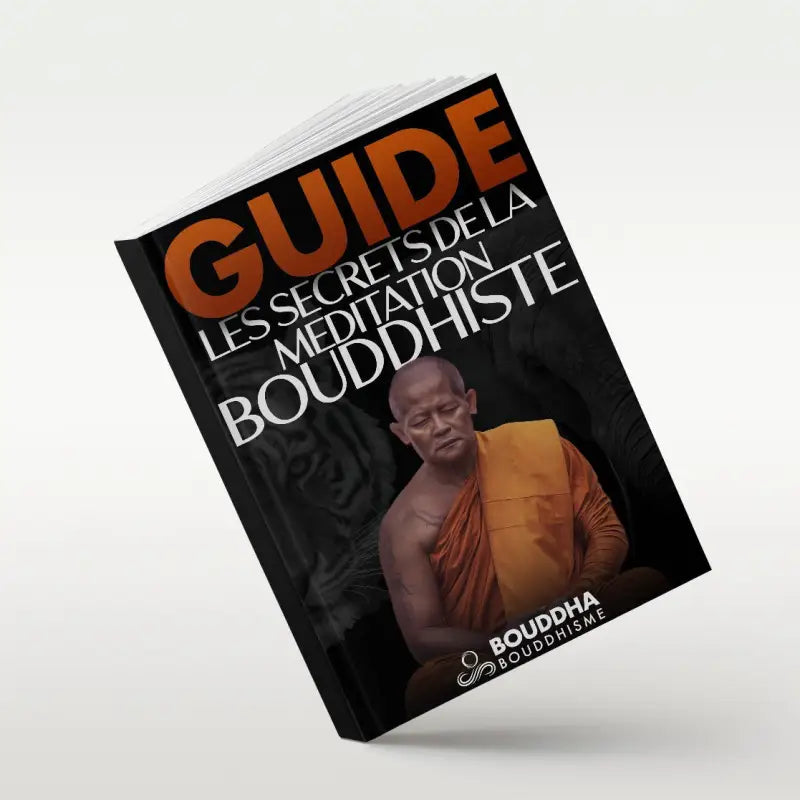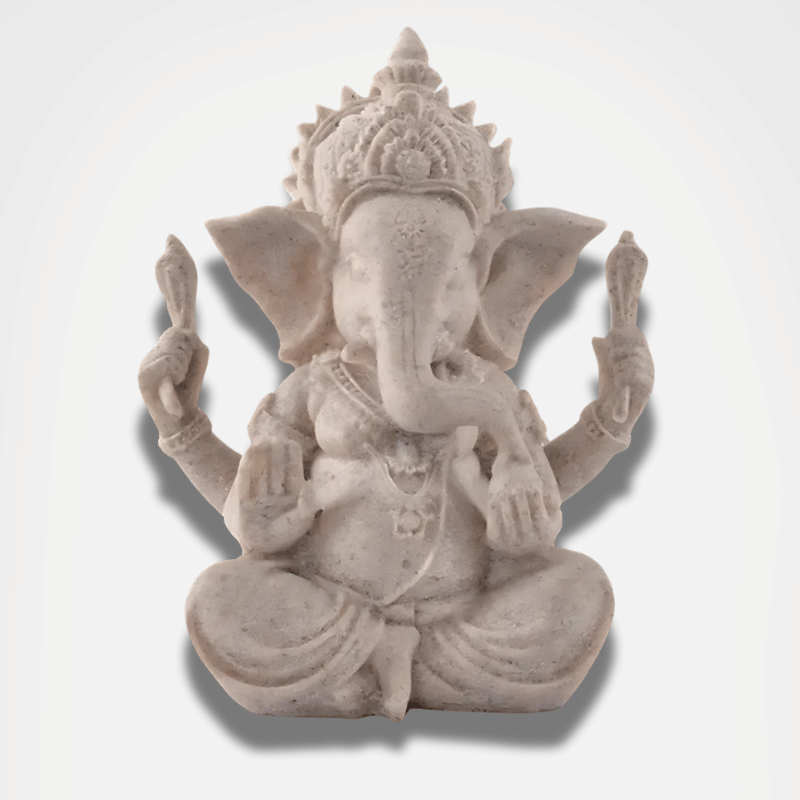Kabbalism: What is Kabbalah?
It is important to realize that Kabbalah is more focused on self-loss than self-discovery, becoming more other-oriented and less ego-centered. The literal translation of the word Kabbalah is “that which is received.” To receive, we must be receptive. We must open ourselves, creating a receptacle to absorb what we wish to understand or grasp, and in turn become part of Kabbalah. Opening to a higher reality, seeing spirit within matter, raising our consciousness to the point where our perception of reality is completely changed, and the divine within all creation is revealed.
The Three Types of Kabbalah
Generally speaking, Kabbalah is divided into three categories: the theoretical, which mainly concerns the inner dimensions of reality; the spiritual worlds, souls, angels, etc., and the meditative, where the aim is to train the person studying to achieve high meditative states of consciousness and, perhaps, even a state of prophecy by employing the Divine names, letter permutations, and so on. The third type of Kabbalah is the magical, which is concerned with altering and influencing the course of nature. It also uses Divine names, incantations, amulets, magical sigils and various other mystical exercises.
Regarding the latter, the vast majority of the most important texts of magical Kabbalah have never been published, and perhaps for good reasons. Besides being a highly complex subject to master, even once mastered, it can sometimes be dangerous. Many early Kabbalists viewed magical Kabbalah as a precarious discipline. R. Joseph Della Reina (1418 - 1472) was one of the great masters of magical Kabbalah. Legend has it that he attempted to use his spiritual powers to bring ultimate redemption, and in the process of failing, became spiritually injured. Some say he committed suicide, while others say he turned into an apostate. Still others say he simply went crazy. Many Kabbalists of later generations took his actions as a warning signal against the advanced practice of transcendent and magical Kabbalah. From then on, the magical elements of Kabbalah have, for all intents and purposes, become extinct, and the knowledge of them has been completely forgotten.
For whatever reason, meditative Kabbalah has also never really been a popular discipline. One of the great proponents of meditative Kabbalah was R. Abraham Abulafia (1240-1296). The mystical school he headed was primarily interested in a method for achieving higher meditative states. He believed that through his method of meditation one could achieve a level of prophecy. He proposed using a writing mantra, meaning that instead of the usual verbal or visual mantra, one should write a word repeatedly, over and over again, in various styles and configurations. It was necessary to attempt to change the sequence of the word and to swap and rotate the letters of the word in every way possible: combining and separating letters, composing entirely new letter patterns, grouping them and then joining them to other groups , etc. This was done until one reached a heightened state of consciousness.
Now, although Abulafia was a prolific writer and authored over forty books during his lifetime, nevertheless most of his works were never published. In fact, even during his lifetime, many other great Kabbalists opposed him and his teachings. Consequently, Kabbalah, whose goal was to achieve the transcendental state of consciousness, never became mainstream, even though, as individuals, there were Kabbalists, particularly the 16th century Kabbalists of Safed, who incorporated his teachings as a means of achieving heightened states of consciousness and awareness.
What remains for us is the theoretical dimension of Kabbalah. The vast majority of Kabbalah that has been and continues to be produced is all in the realm of the theoretical. The main body of this type of Kabbalah is the sacred work of the Zohar, a book of teachings by the second century Talmudic mystic Rabbi Shimon Bar Yochai, which were passed down from generation to generation until their publication at the end of the 13th century by Kabbalist R. Moshe De Leon.
The Three Stages of Development of Theoretical Kabbalah
This is the theoretical aspect of Kabbalah which has been developed over the ages in various stages. For practical purposes, the tradition of this style of Kabbalah can be divided into three basic stages. The first is the time of the publication of the Zohar, with the mystics of that era and the next generation articulating these teachings. The second would be the 16th century mystics who lived in the city of Safed. This particular period of history is called the Great Kabbalistic Renaissance. The movement was led by the profound and systematic teachings of R. Moshe Corodovero, known as Ramak (1522-1570), and particularly by the teachings of R.Yitzchak Luria, (1534-1572) whose nickname was Ari-Zal, the divine Rabbi Yitzchak of blessed memory. Ultimately, the third development of Kabbalah was with the birth of R. Yisrael Ben Eliezer, (1698-1760), known as Baal Shem Tov, the Master of the Good Name, who was the founder of the Hasidic movement , which in a direct or indirect way has guided all other mystical movements up to the present day.
He who has seen only glimpses of theoretical Kabbalah — the novice — tends to see it as a writing full of fantasy, strange events and images, fantastic mythical landscapes, apparently irrational, unrealistic and unrelated to reality. Opening the classic work of theoretical Kabbalah, the Zohar, one is amazed by the imagination of the authors, but perhaps the fascination stops there. To the novice, this appears to be a fantasy book, nothing more. A renowned Kabbalistic master, the Tzadik of Zitshav, once observed regarding Kabbalah that these three stages of its development can be linked to a parable.
In a time when travel was a perilous and arduous endeavor and most people had never left their small village, a man journeyed to a distant land. On his return, he gathered the people of his village and enthusiastically recounted the great adventures of his journey. He spoke of a bird he had seen in a distant land, whose characteristics were remarkable. For example, the bird's face was human; his legs were those of a giraffe. The villagers mocked and dismissed his story as pure fantasy. Inspired by the adventurers in his tales, another villager set out on the same journey, determined to see the world for himself. Years later, he returned to his village, a man of the world. Like the traveler who had so inspired him, he gathered the people of the village and recounted his adventures. He too spoke of this fantastic bird, but the description was slightly different. The bird's face, he said, was not actually human, although it closely resembled it, and the legs were long and spindly and definitely reminiscent of the giraffe; however, these were definitely not actual giraffe legs. Hearing this man's story, the villagers were divided. Some believed wholeheartedly in this man whose story was more convincing than that of the first traveler. Yet there were many skeptics, to whom the story still sounded entirely fabricated and unrealistic.
One of the villagers was determined to bring a final conclusion to the case of this strange bird and undertook the arduous journey himself. When he returned, he gathered the villagers and triumphantly proclaimed, The matter is settled! Then he took this strange and fantastic bird out of his big bag. This time there wasn't a skeptic to be found.
This parable relates to the three stages of the development of the theoretical field of Kabbalah. The author of the Zohar, the main body of Kabbalistic thought, Rabbi Shimon Bar Yochai, was the first to describe the divine presence and our relationship with the Ein Sof. In the Zohar we find tales so strange and fantastic, configurations and images so mythical and mystical, that we can hardly believe. In the 16th century, in Safed, the city of mystics, Kabbalah began to take a more complete, detailed and analytical form. Systematic patterns and thought processes began to appear in Kabbalistic literature. Ultimately, with the birth of the Hasidic movement, Kabbalah came to its full fruition. Hasidism is the mystical movement founded by R. Yisrael Ben Eliezer, the Baal Shem Tov. He brought the image of the Creator into reality. Mystical concepts were no longer distant and unrealistic, but became a concrete part of our daily lives, affecting every facet of creation. Heaven had descended to earth.
The Kabbalistic Journey Comes Full Circle
The purpose of Kabbalah is fraught with misunderstandings. A popular misconception is that the study of Kabbalah is intended to transform someone into a psychic, or perhaps a clairvoyant, capable of miraculous and supernatural abilities. However, this is a misunderstanding. The ultimate goal in the study of Kabbalah is the perfection of the Self. Making the Self a better individual, more expanded, more transcendent, more in tune with the essence and roots of one's soul, this is what Kabbalah offers to those who truly wish to receive it.
The criterion of the authentic and kabbalistic journey is one that comes full circle and where one finally returns to the world of the here-and-now. The Talmud tells of four sages who entered the mystical orchard and had a transcendent experience. Ben Azzai looked and died. Ben Zoma looked and was struck. In other words, he's gone crazy. Acher (the other) (born Elisha Ben Avuyah) looked and cut down his plantations, that is, turned into a heretic. Rabbi Akiva entered and left in peace. The orchard represents the higher spiritual realms. Rabbi Akiva was the only sage, among these four great sages, who was able to enter and exit the mystical orchard without being marked. Being a man of great spiritual stature, a true and well-balanced master, he realized that the goal is not to identify with the light and not return, physically, as Ben Azzai did, or mentally like Ben Zoma did. Nor, it was about feeling personal liberation or ecstasy, but rather about going there and coming back here, with the appropriate wisdom to serve in the here-and-now. The journey is about coming full circle in the behaviors of daily life.
Now, however, the heart of all Kabbalah is the distinct goal and purpose of drawing Infinite Light from the abstract and anchoring holiness in everyday reality. And, the early Kabbalists were known as the "Men of Labor" -- their efforts were not physical, rather they worked their entire lives to improve themselves and raise their level of consciousness to the point of a spiritual perception of reality. With the arrival of Baal Shem Tov, this notion took on a new and fresh meaning. With the teachings of the Baal Shem Tov, the path became very clear as to how this refinement could be achieved.
Knowing Kabbalah is Living Kabbalistically
Kabbalah is often compared to the proverbial tree of life. It constitutes a study of life and, just as life cannot be studied through a textbook but by living it itself, the study of Kabbalah is only effective through the practice of its teachings in our lives. daily lives. Studying Kabbalah as a textbook subject is like studying 'love' without ever experiencing it yourself.
A. Simchah Bunem of Pshischah, a famous Hasidic master, once said of a well-known Kabbalist that he had no understanding of Kabbalah. He explained that while it was true that he was versed in Kabbalistic literature, he had no true understanding. To illustrate his point, he offered the following metaphor. Let's say, for example, that a person wants to familiarize himself with Paris, so he buys a map and guidebook of the city and studies it diligently until he knows all the intricate details and paths of the city; However, it is obvious that if he never visits the real city, he will never really know what Paris really is. The heartbeat and pulse of a city can only be known by actually experiencing it. In the same vein, Reb Bunem concludes, to fully understand Kabbalah, one must live it, and this so-called Kabbalist did not do that.
The Kabbalistic Path of Character Refinement
It only takes a brief look at the work of the great masters of theoretical Kabbalah to notice that the vast majority of texts do not deal with the transformation of character at all. While it is true that Hasidic mystical literature aims to take the highly theoretical and relate it to everyday life, Kabbalah itself does not seem to care so much about the person. But rather, she seems interested in explaining celestial spheres, angels, souls and 'things' like that, not how to conquer negative behavior.
Nevertheless, this does not mean that Kabbalah is not interested in the person himself. On the contrary ! In fact, there are countless remarks throughout all the works of Kabbalah regarding the negativity of bad character traits, such as anger, laziness, depression, and others. The harshest condemnation of depression, anger, and other counterproductive negative emotions is found in the works of Kabbalah. Yet the Kabbalistic method of refining character takes an entirely different approach from the approaches we are accustomed to. It's not a head-on battle to counter negativity on one's own turf, but it's not overwhelming the negative with the positive either. His approach is to come from another point of view and see things from another perspective.
The main objective of mystical thought is to make the person understand that there is nothing other than the Infinite. By reading the different configurations, maps and diagrams that Kabbalah presents, the person is meant to be awakened to the awareness that all that truly exists is Ein Sof. There is an emotional tone that must be aroused when we enter into the truths of Kabbalah, and that is the feeling that the world as we tend to perceive it, as separate, independent of a creator, is only an illusion, and that in reality, there is nothing other than infinite light. Having this notion in mind, consciously or even subconsciously, we are then able to conquer all our personal negative emotions and traits.
The Ego / False Sense of Self, Source of All Negative Emotions
A. Eliyahu ben Moshe Di Vidas, a 16th century kabbalist, argues that there are three primary negative traits, which can be considered the 'primary traits' from which all further dissent emerges. These are: pride, stubbornness, and anger, all having the same origin, that is to say the ego. The ego is the source of all negativity. The heart of all corruption is this false sense of self/ego, which lives in a ceaseless state of what it thinks will cause its survival.
It is the ego that gives birth to all negative emotions. For example, when a person becomes angry, it is the ego's way of showing its objection to not being happy. The ego, when it feels threatened, is the one that protests: 'how can you do this to me,' which arouses anger. Fear of annihilation is the constant condition as far as the ego is concerned. Anger is just a manifestation of a person's preoccupation with their imaginary presumptions of survival. Total involvement with the illusory 'self' is the root of all negative emotions.
By overcoming this false sense of self, which comes from the erroneous estimation of survival, one conquers one's negative emotions. Through the study of Kabbalah, we come to the realization that this false sense of self/ego is only a mask of our true inner dynamic, our transcendent soul. The emotional tone we feel when contemplating Kabbalah is that all that exists is Ein Sof. We should feel this on a cosmic level and then understand it on our own level. Therefore, the illusion of separateness/ego, and as a result, the preservation of this mirage will slowly begin to fade, and with it will fade the negative emotions that are the manifestation of the ego.
Instead of seeing the ego as a true enemy that must be fought to be overcome, we begin to realize that there is nothing but Light, and everything else is simply a veiling of this truth . This is the Kabbalistic approach to self-improvement. It does not deal directly with the negative, or even deal with it at all. Rather, it goes to the source of all problems, the Self/ego, and by extension, all of physical reality, and demonstrates how, in fact, these seemingly independent realities are just a camouflage. By realizing this, our negativity is more easily overcome.
Kabbalah FAQ
What is Kabbalah?
Kabbalah means “received”. In its common usage today, Kabbalah refers to the received wisdom of Jewish practice theology, based on teachings passed down through the generations from Sinai. If Halacha constitutes the body of Judaism, Kabbalah is its soul.
What are the basic books of Kabbalah?
The most prominent book of Kabbalah is the Zohar (“Radiance”), which contains the teachings of Rabbi Shimon bar Yochai and his disciples. Other classical texts include the Sefer ha-Bahir (“Splendor”) and the Sefer Yetzirah (“Book of Formation”). Renaissance-era additions include Rabbi Moshe Cordovero's Pardes Rimonim ("Pomegranate Orchard") and Arizal's writings, which were transcribed by his students.
Who are the main teachers of Kabbalah?
Rabbi Shimon bar Yochai was a student of Rabbi Akiva and a leading sage of the Mishnah. In the years following the destruction of the Temple in Jerusalem, he led a circle of sages in their exploration of esoteric Torah traditions. His teachings are found in the Zohar. Rabbi Moshe ben Nachman, known as Ramban, or Nahmanides, was the preeminent Talmudic and halachic authority of the 13th century. He also composed a classic commentary on the Five Books of Moses which includes many Kabbalistic teachings. After the rediscovery of the Zohar in the late 13th century, important commentaries were composed by Menachem Recanati, Moshe Zacuto, Moshe Cordovero, and many others. There was a major resurgence of Kabbalistic activity in the city of Safed (Tzfat), mainly among exiles from Spain, in the 16th century. The most prominent of this group was Rabbi Isaac Luria, known as Arizal, who was also a halachic authority. The Arizal's explanations opened the Zohar and had a profound impact on all aspects of Jewish thought and practice.
Is Kabbalah the same thing as Talmud?
No. The Talmud is part of the “revealed Torah”. Focusing primarily on Jewish law and observance, the Talmud was well known to Jews throughout the millennia.
Conversely, Kabbalah is concerned with the inner meaning and function of our Divine service on a cosmic scale, using metaphysical metaphors and concepts. Additionally, by learning and meditating on Kabbalistic teachings, a Jew fulfills the mitzvot of knowing G-d, loving G-d, fearing G-d, and more.
Since these teachings can only be conveyed through highly abstract metaphor, they lend themselves to misinterpretation and have therefore been taught only to a select few throughout most of Jewish history.
Who can study Kabbalah?
Traditionally, Kabbalah was studied only by advanced students who were well versed in the Talmud and meticulous in their observance of halacha. Then the Baal Shem Tov, and his disciples, particularly the Magid of Mezritch and Rabbi Schneur Zalman of Liadi, used parables and metaphors to deliver the most profound and vital concepts of Kabbalah to every man and woman. Their teachings are certainly for everyone. It is an omen of the time to come when, "the earth will be filled with the knowledge of G-d as the sea is covered with water."









































